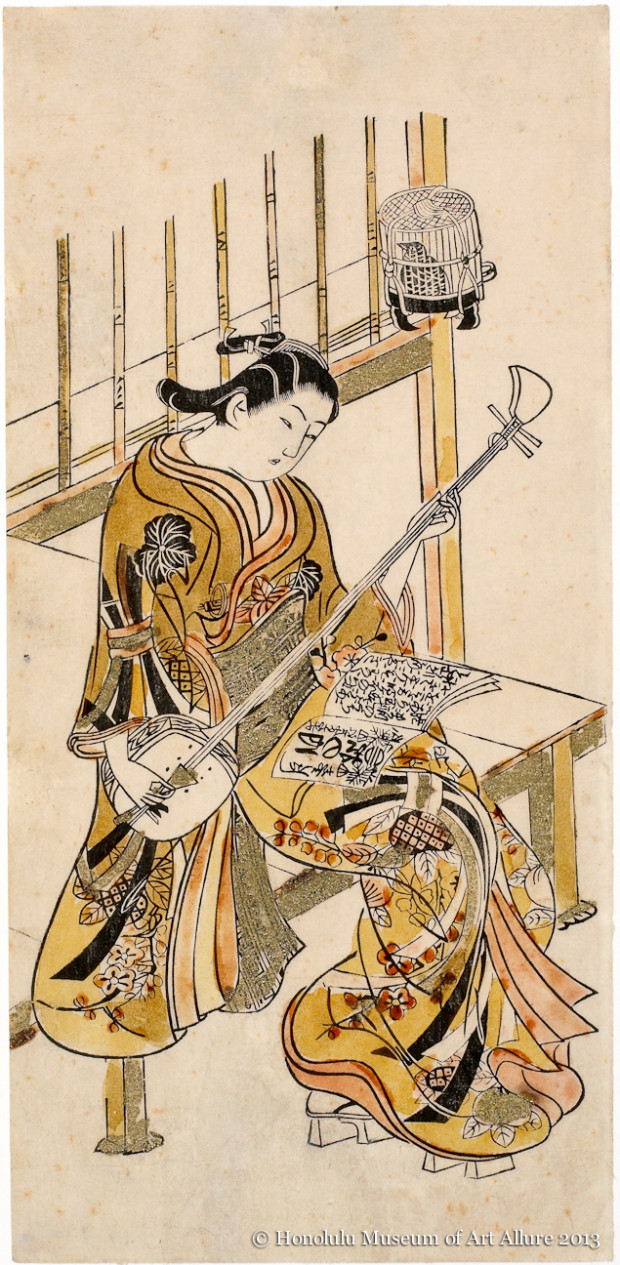Anonymous
Woman Playing Shamisen
Japan, Edo period, early 1720s
Hand-colored woodblock print; ink and color on paper
Gift of James A. Michener, 1991
Honolulu Museum of Art
(21667)
A young woman sits gracefully on a bench, practicing the shamisen. From the music book open on her lap, we know she is playing Matsu no uchi (Among the Pines), the title referring to the pine boughs that decorate the streets during the first two weeks of the New Year. This song was first performed in 1718 at the Ichimura Theatre, a Kabuki theater in Edo, and would have been popular at the time of the print’s publication.
There is a sense of lively movement in the layers and folds of the robe (kosode), which is enhanced by the auspicious design of stylized bundles of dried abalone (noshi awabi ). The caged bird in the upper right provides an effective counterpoint to the figure, helping to balance the composition and echoing the musical theme. The artist may also have been suggesting a correspondence between the woman, here sitting in front of a barred window typical of Yoshiwara brothels, and the bird in its cage.
The work represents an early stage of printmaking, in which the design and areas of black were printed, while the coloring, in shades of orange and red, was applied by hand. Metallic powder was added to embellish the surface further. Although it is not signed, the figure, with her broad face and rounded jaw, and the inclusion of a briefly rendered setting relate the style to artists active in the 1720s, particularly Okumura Masanobu.
View info on museum database (enabled through support by the Robert F. Lange Foundation)


